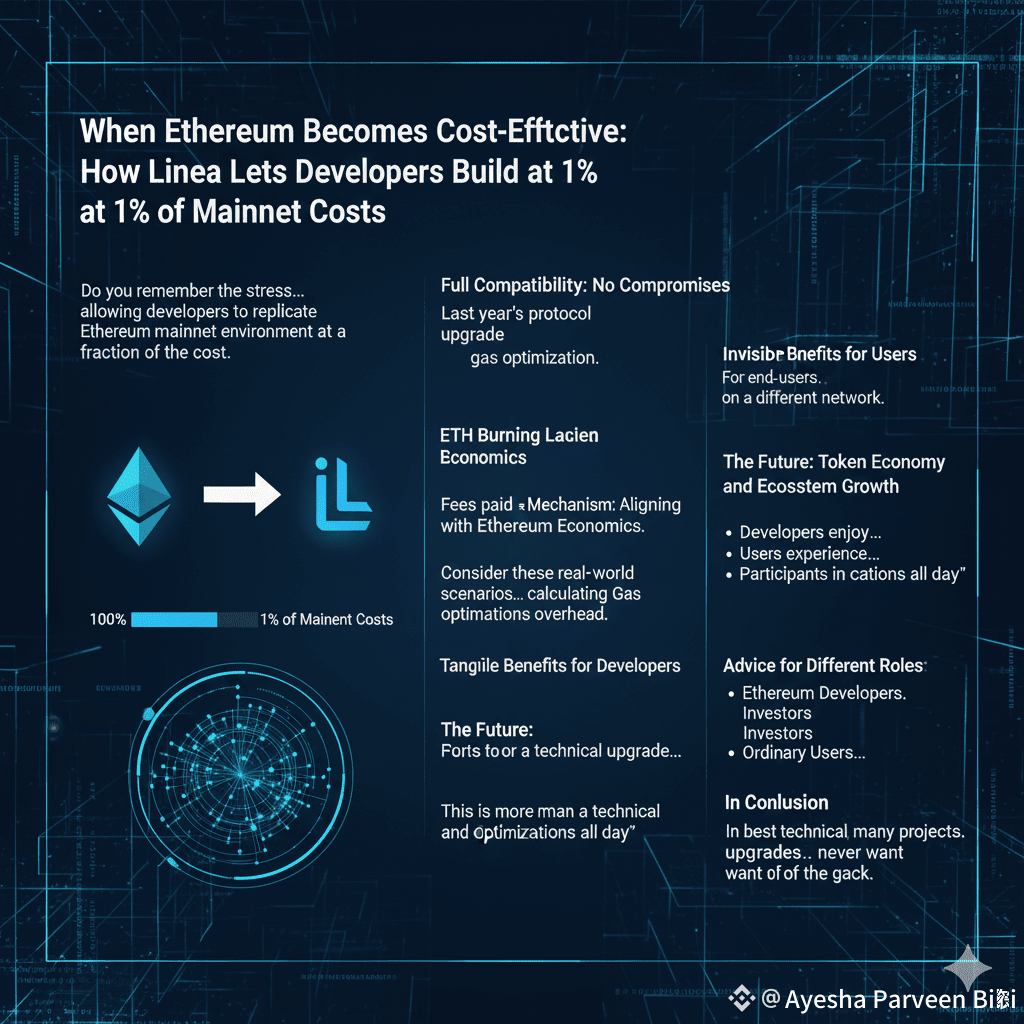Researched By: Ayesha Parveen Bibi
@Linea.eth // #Linea // $LINEA
Do you remember the stress of deploying your first contract on Ethereum mainnet? Gas fees spiking unpredictably, every operation carefully calculated, every deployment a potential budget shock. Linea, the zkEVM network developed under ConsenSys, transforms that experience—allowing developers to replicate the Ethereum mainnet environment at a fraction of the cost.
Full Compatibility: No Compromises Required
Linea’s brilliance lies in its seamless integration. Solidity code works unchanged, familiar development tools remain functional, and wallets like MetaMask require no reconfiguration. It’s like adding an accelerator to Ethereum development: everything familiar, faster, cheaper, and ready to scale.
Last year’s protocol upgrade cut Gas fees by two-thirds. This improvement is not just a superficial tweak—it comes from innovations in proof aggregation and compression. For developers, deploying contracts now feels like using enterprise-grade broadband, removing the mental load of fee calculation and gas optimization.
ETH Burning Mechanism: Aligning with Ethereum Economics
Linea also introduces a smart ETH burning mechanism, which strengthens its connection with Ethereum’s core economic model. Fees paid on Linea aren’t just supporting the L2—they benefit the broader Ethereum ecosystem, reinforcing security and decentralization while reducing wasted overhead.
Tangible Benefits for Developers
Consider these real-world scenarios:
Deploying a complex DeFi protocol now costs tens of dollars instead of thousands.
Users can interact with contracts without worrying about prohibitive Gas fees.
Testnet and mainnet experiences are fully consistent, eliminating environmental debugging.
One developer migrating from another L2 said: “On Linea, I finally focus on product logic instead of calculating Gas optimizations all day.”
Invisible Benefits for Users
For end-users, the beauty of Linea is its seamless experience. DApps feel just like Ethereum, transactions settle in seconds, fees are almost negligible, and security remains Ethereum-grade—all without users realizing they’re on a different network.
The Future: Token Economy and Ecosystem Growth
The Linea ecosystem is evolving beyond technology into a complete economic loop:
Developers enjoy a friendly and cost-efficient environment.
Users experience fast, smooth, low-fee interactions.
Participants in the token economy share in ecosystem growth, creating a self-reinforcing cycle.
This is more than a technical upgrade—it’s an evolution in business and ecosystem design.
Advice for Different Roles
Ethereum Developers: Use Linea as your preferred testing and deployment environment. Zero learning curve and minimal fees let you experiment boldly.
Investors: Look for projects integrated deeply into the Linea ecosystem. Infrastructure maturity often precedes rapid value growth at the application layer.
Ordinary Users: Next time you use a DApp, notice the smooth, low-cost experience—you may already be benefiting from Linea without realizing it.
In Conclusion
In blockchain, many projects compromise compatibility for speed or add complexity for innovation. Linea strikes a rare balance, preserving Ethereum’s familiar experience while solving the critical pain points of cost and efficiency.
The best technical upgrades are those users barely notice, and Linea is proving that true innovation enhances existing experiences rather than reinventing the wheel. Next time high mainnet fees make you hesitate, explore Linea-based applications—you may never want to go back.
#Ethereum #zkEVM #Layer2 #BlockchainDevelopment
